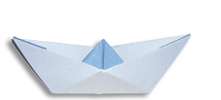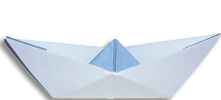THE REASONS OF A CHOICE:
In my work, a bit for my own choice and another bit for necessity, I had the opportunity to range all types of boats, from motor-yachts to the fast-commuter and sailboat,, etc. … allowing me to understand very well what are the differences and points of contact between these worlds only seemingly impervious to each other.
From this extensive experience I have gained the following beliefs:
– As a nautical businessman, as a naval architect and as a sailor, I never thought that there was only one “correct” way to sail,
– The boat is first and foremost a “means” but it takes the form of the “aim” as besides being technically suitable to sail the sea, it is also the symbol of lifestyle and personal culture of his owner/lover.
– This way of life and approach of the ship owner to the sea, changes over time producing for the same person different needs that require different responses.
-Therefore it’s possible to say that the boat is a “means” in the fullest sense of the term.
– Indeed, It’s this particular dimension of the boat, the element that has always interested me as an architect.
– On this basis I have always tried to escape easy labeling focusing on the need to give correct answers to complex questions.
– It’s in this complexity and rejection of easy classification which I believe should not exist “classes” of boats but a gradation of types that proposes several ways to go to sea according to the many and complex needs of everyone starting from the Olympic centerboard (if not even from the kite-surfing) and arriving to the pleasure boat with continuous pouring and contaminations.
– In both cases it’s the research for the perfect balance between technical qualities, ease of use and recovery of a maritime culture that does not accept simplification and schematization because the sea has never changed, and at the same time, is never the same, always changing its behavior and reactions in response to our attempt to use it, enjoy it or simply navigate it.
In order to clarify these concepts that are the basis of all my projects and that always guided me, it has to be pointed out, to my opinion, that the mistake that we keep making is to think that there are no standard answers from a formal and technical point of view to the different situations that may occur when sailing.
I believe that if we were supposed to imagine a “hierarchy” of the factors that determine the pleasantness and safety of navigation, this, in a descending order, would be as follows:
– The “Fate” (for the believers God’s mercy, for the others fortune or fate)
– The inner strength of the captain and crew (mix between experience, self-confidence, confidence about the means, optimism, psychological resistance, ability to suffer what I call “active safety”)
– The natural buoyancy of the boat, (someone calls it seaworthiness)
– The general building quality
– Ease of use
– Technology
It ‘s obvious that an architect and shipbuilder can step-in only on some of these aspects.
Consider, for example, the seaworthiness, (balance, behavior of the hull, stability, etc.) and the ease of use (simplification of maneuvers, ergonomics, etc…)
It ‘also true that these factors influence the responses of the crew in different situations, (especially if they are in some way made evident and detectable), and determine a greater “trust of the means” that results in the ability of mastering the situation, clarity of decision, then self-confidence, and optimism ….
In the final analysis, this virtuous spiral of security often leads to affect the fate or, for believers, not to disturb God to get us out of troubles in which we went by ourselves.
As you can see from the hierarchy listed above, it is my belief that technology is the least important factor because it is the most fragile and less reliable and tends to create a false sense of security that overshadows the important qualities of the boat. Nevertheless it is not waivable, it has to be used as “support of” and not “instead of”:
A final consideration on the design criteria that I normally adopt I would reserve it to the concept of “Environmental Impact”.
Generally, when we look at the design of a boat, we evaluate the abstracted from its context or, at most, we imagine it in the middle of a blue and calm sea. Let’s try instead to see it placed in a Polynesian atoll or, better yet, in the harbor of Portofino. If, in these contexts, our boat is in harmony can be realized as it is, but if it is an “extraneous element”, we send back the project to the sender asking to do it again in a “human” scale.
All the above considerations lead to the following conclusions:
– In thirty-five years of work at the shipyard I gained competence, craft, experience and learned HOW TO MAKE BOATS.
– The constant and direct confrontation, quick and often contradictory, with a demanding and evolved clientele, has taught me the importance of quality and the value of humility always giving me the strength to call myself back in the discussion to find out exactly WHAT KIND OF BOATS TO DO.
– Only the passion of my clients and I can explain WHY ‘I still take care about boats: to give and receive EMOTIONS.



